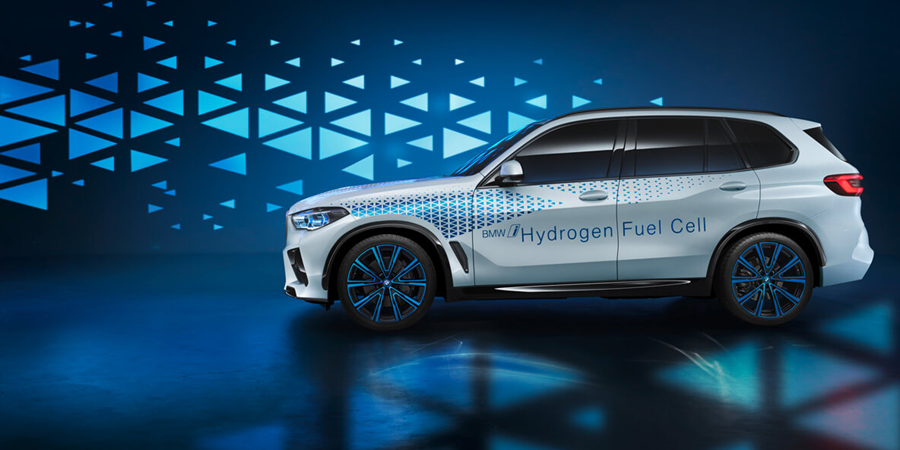PEM Fuel Cells for Electric Vehicles Prove You Can Have Your Power and a Greener Planet Too

Originally published by FuelCellsWorks
A look into the history of automobiles reveals that each change implemented to meet the latest desire of society came with a compromise, if not a sacrifice. Replacing horse-and-wagon with motorized cars? Be ready for more pollution. Yearning to travel beyond your town’s borders? Better get working on, and figuring out how to fund, roadway infrastructure.
The SUV craze was synonymous with “gas guzzlers.” Compact cars were economical but not always practical. Introductory models of electric cars, while better for the environment, had a number of challenges to meet when it came to limitations on distance-per-charge, recharging time and convenience, and overall “need for speed” and power on the road.
Today, local, state, national, and global regulations aimed at phasing down emissions to achieve an eventual net-zero paint a clear picture: cleaner air and global sustainability can no longer be sacrificed. So, does this mean vehicle performance and size have to suffer? The answer is a definitive no. And the reason is next-generation technologies such as the Chemours Nafion™ membrane.
Nafion™ membranes are widely used for Polymer Electrolyte Membrane (PEM) fuel cells that offer a clean energy source to power anything that moves. Backed by years of real-world experience, the latest generation Nafion™ membrane delivers improved chemical durability and productivity — making it an essential component in fuel cells generating power in a range of applications including passenger vehicles, buses, trucks, boats, and forklifts. To further demonstrate the extent of their power generation, Nafion™ membranes have also been used in planes and NASA spacecrafts. Lastly, it’s important to remember that membrane fuel cells have no moving parts, enabling quieter vehicles, simplifying operation, and lowering maintenance requirements.
You can see that, in terms of performance, fuel cells for electric vehicles (FCEV) deliver. Moreover, with companies like Chemours “in the labs” consistently, we can be assured new generations of technology will be developed to meet, if not stay ahead of, society’s changing needs and desires for better power, performance, and convenience for their electric vehicles (EVs). The same holds true for the environmental benefits of EVs. To ensure that regulatory requirements for low-emissions and other sustainability factors will be met, fuel cell technologies including Nafion™ membranes are being innovated and will continue to be improved to meet changing standards. Consider the following United Nations’ Sustainable Development Goals (UNSDG) and the ways FCEVs help to advance them.
UNSDG 3, Target 9: By 2030, substantially reduce the number of deaths and illnesses from hazardous chemicals and air, water and soil pollution and contamination. FCEVs are a clean technology using a clean fuel. Unlike vehicles powered by internal combustion engines, FCEVs emit water, not fine solid particulates and pollutants such as nitrous oxide, benzene, and formaldehyde — all of which contribute to the transportation sector shouldering blame for a decline in air quality and negative impact on people’s well-being. According to the World Health Organization, ambient air pollution accounts for an estimated 4.2 million deaths per year and approximately 91% of the world’s population lives in places where air quality levels exceed WHO limits. By reducing this ambient air pollution, FCEVs can help reduce mortality rates.
UNSDG 7, Target 2: By 2030, increase substantially the share of renewable energy in the global energy mix. Because fuel cells in reverse operation produce hydrogen through water electrolysis — a process in which Nafion™ membranes are a critical component — they represent a significant solution to sustainability challenges. Moreover, the fuel cell-membrane technology offers an efficient method for storing the renewable energy they convert and allow for better management of the peaks and valleys of demand and supply. Undoubtedly, FCEV technologies will help enable the decarbonization of transportation, whose fuel combustion is responsible for 24% of direct global CO2 emissions. Therefore, FCEVs can substantially increase the share of renewable energy in the global energy mix.
UNSDG 9, Target 4: By 2030, upgrade infrastructure and retrofit industries to make them sustainable, with increased resource-use efficiency and greater adoption of clean and environmentally sound technologies and industrial processes, with all countries taking action in accordance with their respective capabilities. The U.N. measures progress toward this target in terms of “CO2 emission per unit of value added.” Since FCEVs using renewably generated hydrogen create significant economic value with minimal CO2 emissions, the adoption of this technology will advance this goal by increasing resource-use efficiency through a clean and environmentally sound technology.
These are just a few examples of many that demonstrate FCEVs aren’t just helping to improve the environment. These technologies are making a measurable, vital impact on the sustainability of the planet by providing solutions that are clean, reliable and accessible. They are advancing the vision of economic growth and environmental health no longer being at odds, but instead coexist and, in fact, working together. As a critical component in fuel cells’ ability to efficiently convert energy stored as hydrogen into electricity, PEMs such as Nafion™ have the potential to change the landscape of renewable energy — serving as a foundation for stronger economies, healthier living, and a greener world for future generations.
Andy Liu – Global Product Sustainability Strategy Leader, Chemours
Andy earned his Bachelor of Science in chemistry from the California Institute of Technology and his Ph.D. in inorganic chemistry from Massachusetts Institute of Technology. After working at Northwestern University as a National Institutes of Health Postdoctoral Fellow, Andy joined DuPont as a Research & Development chemist and served nearly 20 years developing new products, processes, and applications, as well as supporting sales, marketing, and manufacturing. In January of 2009, he assumed responsibilities for developing and executing global strategies for gaining regulatory notification and registration approvals for new substance commercialization. He is currently the Global Product Sustainability Strategy Leader at Chemours, responsible for leading the company Sustainable Offerings Corporate Responsibility Commitment Goal, which aspires to maximize the Chemours product portfolio’s contributions to the United Nations Sustainable Development Goals.

